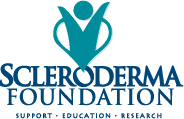How to Help Manage
Scleroderma-Associated ILD
LEARN MORE
Below are some management options for scleroderma-associated interstitial lung disease (ILD) that you can discuss with your healthcare provider to create a disease management plan that’s best for you.
Medication
While there is no cure for scleroderma-associated ILD, medication can help manage the rate of decline in lung function in people with this disease. Get more information.
Pulmonary Rehabilitation
Pulmonary rehab includes a range of conditioning and breathing exercises, as well as lifestyle education, like how to manage stress and nutritional counseling. The goal is to help people with scleroderma-associated ILD understand their breathing function to the best of their ability, and increase strength and endurance. Pulmonary rehab should be started right away for those who are eligible.
Oxygen Therapy
Oxygen therapy helps to supply additional oxygen to people who have low oxygen levels. It may help reduce breathlessness, enabling the individual to perform physical activities, like pulmonary rehab exercises.
Lung Transplant
Lung transplants may improve both life expectancy and physical function.
Palliative Care
Palliative care is focused on managing symptoms and addressing the emotional, spiritual, physical, and social needs of those living with a serious illness like ILD.
Clinical Trials
Taking part in clinical trials may be an option for some people with scleroderma-associated ILD. Talk with your healthcare team about your condition and your options.

